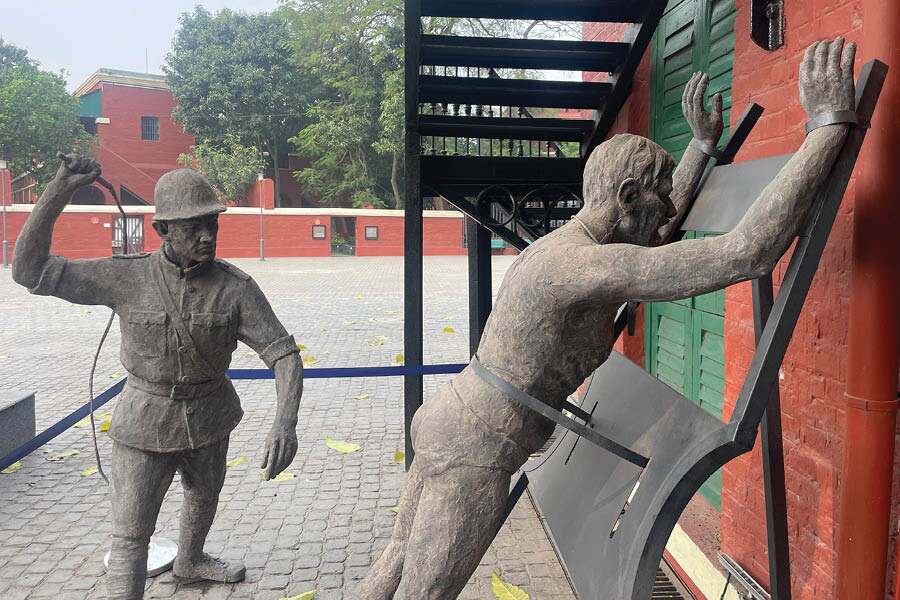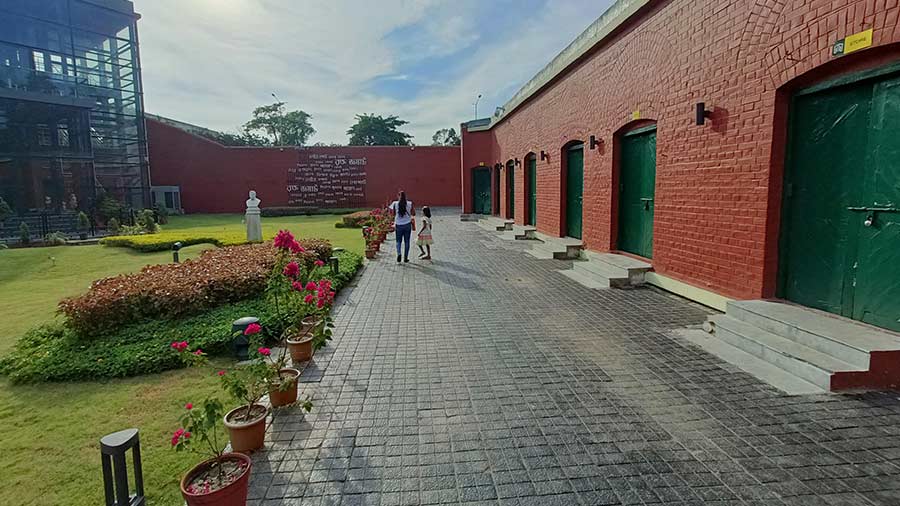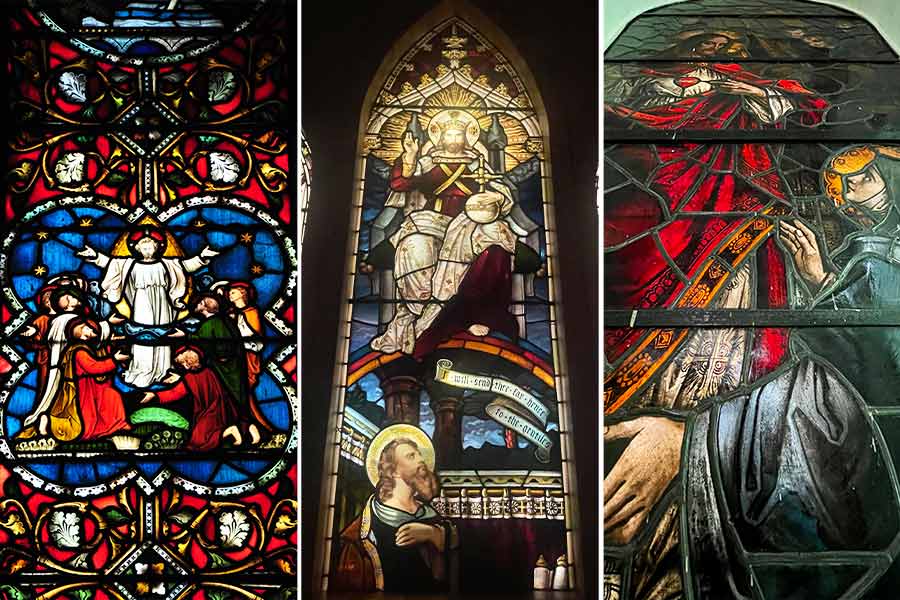The most romantic adaptive Calcutta reuse in decades is the Alipore Central Jail, period.
Few Indian locations have held as many unspoken revolutionary stories and secrets as close to its chest; when these layers are unpeeled, as I believe they will someday, it could translate into a reappraisal not only of the location but of Calcutta as well.
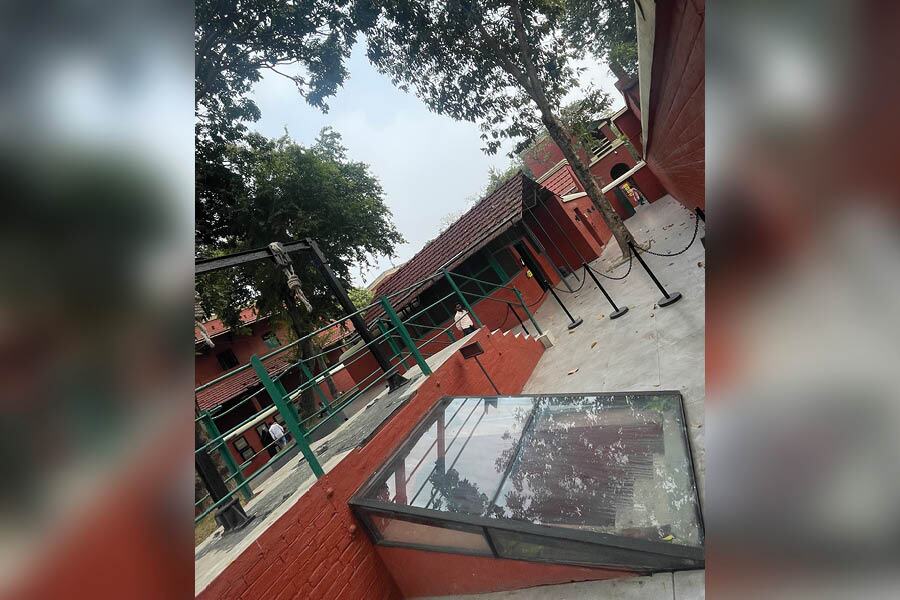
The glassed basement where the lifeless bodies of convicted freedom fighters dropped
I could launch into a lazy brick-and-mortar descriptive of this 15-acre facility; I would rather celebrate its software instead. When the poet-philosopher Iqbal went to Cordoba in Spain and gazed upwards at the stilled minarets, he scribbled these lines: ‘Posheeda tere khaak me sajdo ke nishaan hain; khaamosh azaane hai teri baad-e-seher main.’ I am incapable of matching his Urdu, but I can attempt in sentiment instead. When one communes with the ehmiyaat of sarzameen-e-Alipore Central Jail, one will tread softly and barefoot through its alleys; one will rub the khaak of its zameen and wipe one’s face with it because what purports to be an adapted correctional home is really my legacy, my wujood (existence).
This is why.
More than a century ago, when it had become evident that the sporadic attacks on the hukoomat-e-Hindustan were nothing more than minor irritants, a few young Calcutta revolutionaries grouped inside a two-acre Maniktala garden home behind the façade of a dilapidated home, ponds and a family temple. What transpired within kickstarted a chain of events that would extend for the next half a century and thereafter: around 20 recruits from the educated Hindu middle-class — not the lower-income bekaar chheley seeking a time-productive outlet — grouped with the focus to enhance ammunition access.

A plaque on Dinesh Gupta
Buying arms would have been easier but limiting; the bigger game lay in making them instead. This skill could be taught; it could be replicated; it could be dispersed; it could make supply sustainable. The group picked out one (Hemchandra Das) to be dispatched to Paris in 1906. He would plug into a network of pan-European revolutionaries; he would study chemistry; he would access detailed bomb-making manuals; he would translate them (70 pages) even as his Maniktala colleagues had also searched down an explosives expert.
Demo time came soon. The revolutionaries focused on a train carrying the lieutenant governor Sir Andrew Fraser before the 1907 Congress session. They blew the train; in one sense, they failed as the object of their attack escaped unhurt; in one sense, they succeeded because the bomb exploded alright. No one was arrested.
The hukoomat had, however, picked up a nationalistic slant in Aurobindo Ghosh’s writings and presumed that perhaps he may have had something to do with this assault. As a related consequence, it mounted surveillance of his brother Barin Ghosh. The British — who probably employed Bengali translators to screen Aurobindo’s Bande Mataram editorials — could not pin the man they were after. They did what was next best; they went after the Jugantar newspaper and imprisoned its staff.

It is one of the most important museums related to India’s freedom struggle
One detail showed up: the district judge who had passed this ruling — and other rulings of a similar kind — was Douglas Kingsford. This man had to be edited, the revolutionaries concluded; the British intelligence picked whispers; Kingsford was immediately relocated to Muzaffarpur where it was assumed that he would be safe.
The revolutionaries would not be checkmated; they dispatched Prafulla Chaki and Khudiram Bose to Muzaffarpur with revolvers and a small bomb. On April 29, 1908, the two waited for Kingsford to return from the club. The plan should have been simple to execute but for a change in script; two carriages left from the club at an interval. Khudiram lobbed the bomb through the window of the first carriage, assuming that it would be carrying Kingsford. It was carrying two ladies of the British aristocracy who died instantly; Kingsford escaped; the assailants fled.

The most romantic adaptive Calcutta reuse in decades is the Alipore Central Jail
Now, begins the drama: Khudiram walked all night to reach the railway station where the alerted police picked him up (of all people), jailed him, tried him in court and sentenced him to death by hanging — for him to become the romantic ‘Bhagat Singh of Bengal’. Luck ran out a second time that evening. Prafulla was ticketed to sit beside an off-duty sub-inspector on the train from Muzaffarpur to Calcutta; the attack on a district judge had captured attention in this reasonably sleepy place so everyone but everyone suspected every other person; the sub-inspector alighted at one of the train stops to wire ahead that he may have been sitting beside just the person they were looking for; when the police chased Prafulla down the platform at the next stop, the latter pulled out his revolver and consumed all the bullets on his pursuers but one. Then realising that he was outnumbered, he weighed the options: shoot one more of the police closing in on him and try his last attempt to escape. Prafulla turned the gun on himself instead.
In Calcutta, the British network fanned out immediately. It shortlisted probable masterminds; within just three days of the Kingsford attack, it swooped down at the garden house; Barin Ghosh and his associates were least expecting this; embarrassing evidence (including the bomb manual) was confiscated. In another part of Calcutta (Grey Street), Barin’s brother Aurobindo was led away by the police with a rope tied around his waist to Alipore Central Jail, kick-starting the sequence of events that would eventually gain prominence as ‘Emperor versus Aurobindo Ghosh & Others’ (or Alipore Bomb Trials).
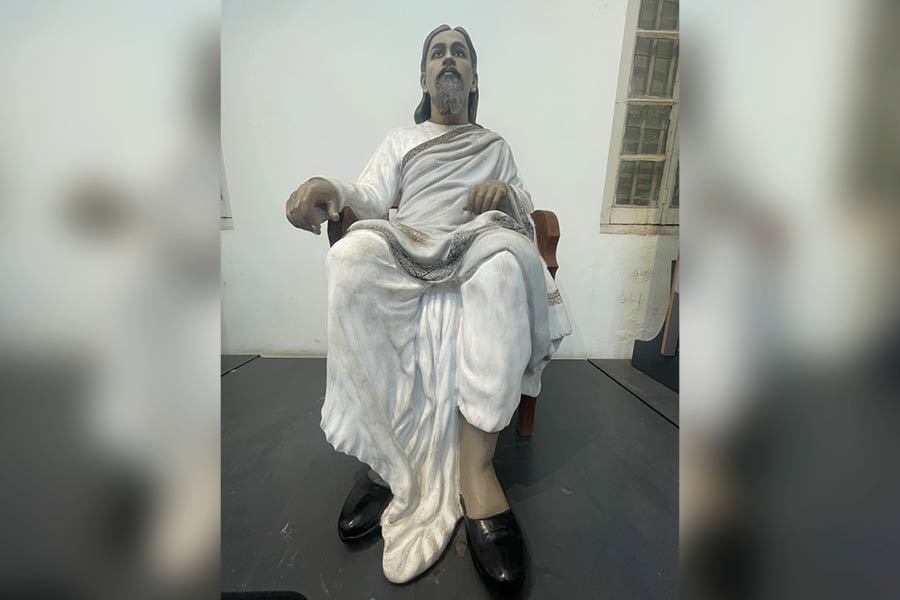
Aurobindo Ghose (his life-size idol in picture) turned to a junior lawyer, Chittaranjan Das, to argue his case
This could have been the end of the road for these revolutionaries. Except. Even as the trial was in progress, they continued to surprise; they smuggled two revolvers into Alipore Central Jail where an imprisoned Barin arranged for these to be delivered to Kanailal Dutt and Satyen Bose. No misplaced bravado here; prisoner Narendranath Goswami had turned approver under pressure and was likely to spill revolutionary network details.
The doctor in the Alipore Central Jail hospital was a certain Bidhan Chandra Roy. He wrote out the medical note that would get Kanailal and Satyen admitted to hospital in proximity to Narendranath. The moment arrived. The guns were extracted. They were used to shoot Narendranath in the jail yard. In a moment of self-preservation, Narendranath turned to the stairs. His fellow revolutionaries pursued. They emptied the bullets. Narendranath died without uttering a word. Kanailal and Satyen were arrested, imprisoned on site and hanged.
The revolutionaries struck back. The sub-inspector who had identified Prafulla Chaki was singled out and eliminated. Meanwhile, the Alipore trials resumed. Das argued that there was no direct link — no guns or documents — between his client and violence. The arguments and counter-arguments continued day after day; a zen-like Aurobindo would write that ‘The counsel's unvaried dramatic performance, the boyish frivolity and light-heartedness of youthful magistrate, looking at the amazing spectacle I often thought that instead of sitting in a British court of justice we were inside a stage in some world.’
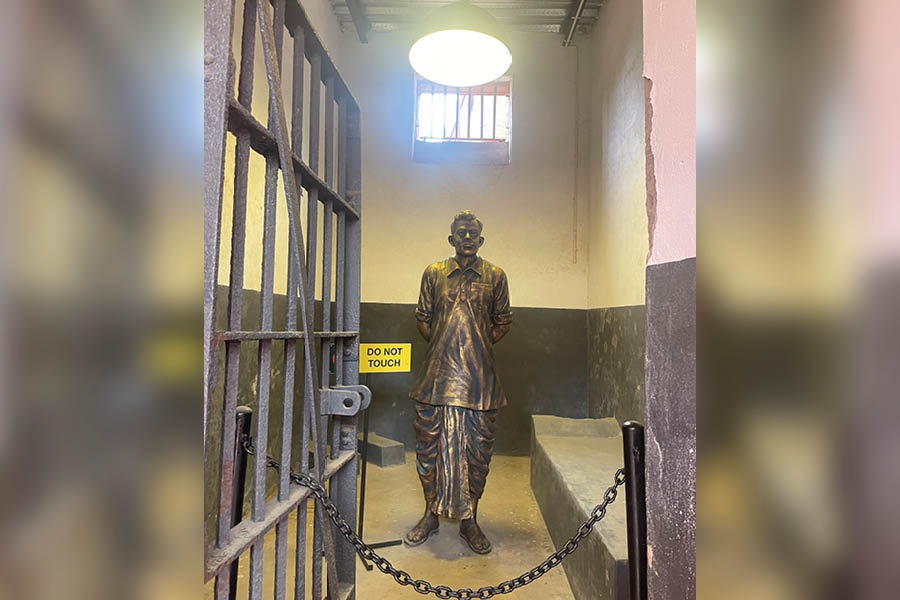
The cells have a numbing effect on visitors
Barin Ghosh and Ullaskar Dutt were sentenced to death by hanging (later commuted) while Aurobindo was completely cleared (‘The only result of the wrath of the British government was that I found God’). When he took that first step out of Alipore Central Jail, Aurobindo had shed a skin: from a suspected inquilabi to a national hero. Aurobindo delivered lectures across Bengal; he started a new paper with multi-lingual editions; a future British Prime Minister called on him.
Aurobindo was testing the lines of acceptability and dissent. However, a couple of years later when it became apparent that the British could take him in, he simply rose from his office, slipped into the bylanes, changed directions en route, reached the river, took an anonymous boat to Chandernagore, periodically switched homes and six weeks later, re-entered Calcutta, bought himself boat cabin space to Pondicherry (French enclave).
The story underwent a tectonic shift thereafter; the short-term migrant gradually began putting down his roots; the political refugee turned spiritual; a revolutionary at the cusp of violence drifted to the periphery of India's political narrative. The revolutionary began to morph into a seer.
I have narrated this backstory for a re-understanding of Alipore Central Jail. It is one of the most important museums related to India’s freedom struggle. If you speak of Amritsar’s Partition Museum with awe, this place is no less. The solitary cell number six is where Aurobindo Ghosh was imprisoned; the revolvers employed to kill Kingsford are on display; the background music at the gallows (‘Ekbaar biday de maa’) had me groping for a handkerchief; I walked the corridor where Narendranath collapsed; I watched the glassed basement where the lifeless bodies of Kanailal and Satyen dropped.
I must go down to ACJ again. Not as a selfie-seeking tourist. But as a research-enriched intern seeking to offer my modest nazraana as honorary guide for all those looking to be inspired by tales of courage and character of those who gave their enslaved yesterdays so that their children — and ours — could see empowered tomorrows.
Barefoot.


